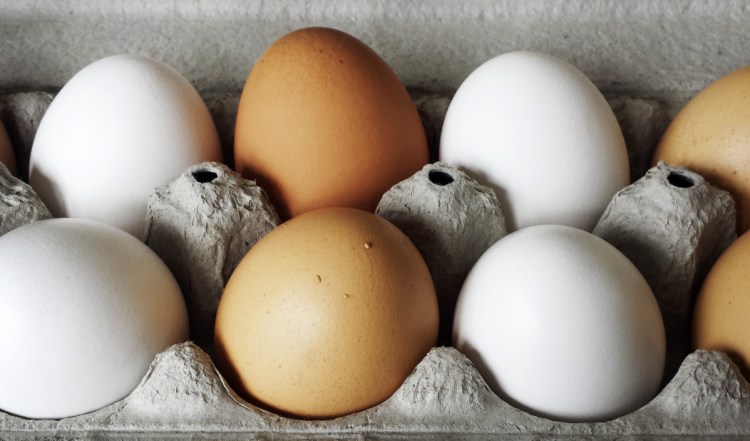One day early last fall I was late making the rounds at my favorite Friday farmers market. By the time I’d arrived, the only chicken eggs available were produced by pullets, hens less than a year old who were still getting the hang of the whole egg-laying thing. These pullet eggs were $2 cheaper by the dozen than typical “large” eggs because they weighed in at only two-thirds the size.
I’d intended to devil any egg I bought that day, not use them to leaven a cake, so the size didn’t matter much to me. I bought them, happily so, not only because their petite circumference would yield single-bite-sized deviled eggs, but also because I realized pullet eggs are just part of the natural egg-laying process. And if I were going to eat larger eggs regularly, the sustainable thing to do would be to learn to love the little ones, too.
Pullets start producing eggs when they turn about 5 months old. They produce small eggs – defined by the USDA as weighing between 18 and 21 ounces per dozen versus between 24 and 27 ounces per dozen for large eggs – every couple of days during the first month or so of their egg-laying careers. When hens get older, not only do their eggs get bigger, but they lay more frequently – up to an egg a day.
Conventionally produced pullet eggs typically get processed into pasteurized liquid eggs or dried, powdered ones. The half-dozen farmers I talked to for this column say they usually eat the small ones themselves as their customers tend to squawk about having smaller ones in the mix of their boxed dozens.
Research shows that ounce for ounce, the nutritional content of the yolks and the whites of pullet eggs is identical to that of large eggs. The pullet egg yolks are generally that same size as ones found in large eggs, but there is typically less white, which in the end, makes them richer. You can still bake with pullet eggs, you just need to use three pullet eggs for every two large eggs called for in a recipe.
When pullet eggs are available for sale will depend on the farmer. For example, Maine-ly Poultry’s pullets are just starting to lay now, and the company offered them in a box of 18 for the same price as a dozen large ones. But farmers who start a new flock of chickens in the spring will have pullet eggs ready in early fall.
So give a girl a break any time she’s ready to start laying, ask for pullet eggs early and often.
CHRISTINE BURNS RUDALEVIGE is a food writer, recipe developer and tester, and cooking teacher in Brunswick, and the author of “Green Plate Special,” a cookbook from Islandport based on these columns. She can be contacted at cburns1227@gmail.com.
Send questions/comments to the editors.


